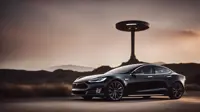Cargill to install waste-to-energy system in Canadian beef processing facility
30 Jul 2011
Agricultural producer Cargill yesterday said that it is investing approximately C$36 million in a waste-to-energy project at its Alberta, beef processing facility that will increase to 80 per cent the plant's ability to generate energy it uses to produce meat products.
A portion of the funds, approximately $10 million, will be provided by the Canadian government as part of its initiative to help meat processors reduce their environmental footprint.
This public-private collaboration for creating energy from waste that otherwise would be destined for a landfill is the first of its type in North America and the largest single waste-to-energy project Cargill has undertaken on the continent.
''Using existing technology, we will install specialised equipment that will make our High River beef processing facility the most sustainable and environmentally friendly beef processing facility in the world,'' says John Keating, president of Cargill Beef. ''Recognising the environmental, agricultural and community value and benefits of this project is a tribute to the Canadian government and its visionary approach to working with business to find mutually beneficial solutions to long-term challenges.''
Once it is in operation, the new system will eliminate 21,000 metric tons of fossil fuel emissions annually, in addition to mitigating the facility's electric energy requirements by producing 1.4 megawatts of power.
Using organic waste that would otherwise go to landfills also reduces the load on those sites. Combined with the facility's existing methane gas capture that prevents release of this greenhouse gas into the atmosphere, and its subsequent use as fuel for the plant, 75-to-80 percent of the facility's energy needs will come from renewable sources.
Cargill's High River beef processing facility employs approximately 2,000 people who harvest 4,000 beef cattle daily, representing $1 billion in annual cattle purchases and totalling one-third of the nation's processed beef volume.
''We care a great deal about the environment because it's the only one we have, therefore we care about finding better ways to feed the growing world population in a sustainable way,'' said Keating. ''The High River waste-to-energy project is another step in the right direction, and one that could potentially be replicated at our other beef processing facilities around the world, which would be a gratifying achievement.''



.webp)
.webp)

.webp)
.webp)

























